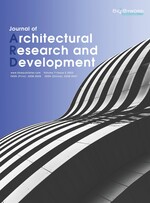Abstract
This paper examines national urban agglomerations by taking factor flows as the focal point as the research
subject. By dividing the stages of urban agglomeration development, a comprehensive framework of urban shrinkage is constructed, encompassing economic, population, and social shrinkage. The study explores the spatial distribution characteristics of urban shrinkage during different stages of urban agglomeration and investigates the influencing factors using a geographic detector model. The findings reveal that urban shrinkage within urban agglomerations is widely spread, predominantly in peripheral areas. During the diffusion stage, urban shrinkage is scattered, with population shrinkage concentrated in peripheral regions, economic shrinkage concentrated on old industrial cities, and social shrinkage concentrated on the northeast. The outcomes of the geographic detector model indicate that traffic flow, capital flow, information flow, node importance, network connectivity, government investment, openness, and environmental regulations all play significant roles in shaping the spatial distribution of urban shrinkage.
References
Zhang J, Feng C, Chen H, 2017, International Study of Urban Shrinkage and Exploration of China’s Localization. International Urban Planning, 32(5): 1–9.
Lin X, Yang J, Zhang X, et al., 2017, Measurement of Urban Shrinkage and Analysis of Influencing Factors in China: From the Perspective of Population and Economic Changes. Human Geography, 32(1): 82–89.
Gao S, 2017, The Phenomenon, Concept, and Research Source of Shrinking Cities. International Urban Planning, 32(3): 50–58.
Wu K, Yao CC, 2021, Exploring the Association Between Shrinking Cities and the Loss of External Investment: An Intercity Network Analysis. Cities, 2021(119): 103351.
Deng TT, Wang DD, Yang Y, et al., 2019, Shrinking Cities in Growing China: Did High Speed Rail Further Aggravate Urban Shrinkage?. Cities, 2019(86): 210–219.
Döringer S, Uchiyama Y, Penker M, et al., 2020, A Meta-Analysis of Shrinking Cities in Europe and Japan: Towards an Integrative Research Agenda. European Planning Studies, 28(9): 1693–1712.
Bernt M, Haase A, Großmann K, et al., 2014, How Does(n’t) Urban Shrinkage Get onto the Agenda? Experiences from Leipzig, Liverpool, Genoa, and Bytom. International Journal of Urban and Regional Research, 38(5): 1749–1766.
Yang ZS, Dunford M, 2018, City Shrinkage in China: Scalar Processes of Urban and Hukou Population Losses. Regional Studies, 52(8): 1111–1121.
Kang W, Sun D, 2017, Research Progress and Prospect of Urban Shrinkage. Economic Geography, 37(11): 59–67.
Sun P, 2022, Urban Shrinkage: Connotation, China, Research Framework. Progress of Geographical Science, 41(8): 1478–1491.
Du H, Zhang X, 2005, Study on the Changes of Urban Spatial Agglomeration in Xinjiang in Recent Years. Geographic Science, 25(3): 268–273.
Sun P, Xiu C, Ding S, et al., 2011, Study on the Imbalance and Spatial Polarization of Regional Development in Northeast China. Progress of Geographical Sciences, 30(6): 715–723.
Long Y, Wu K, Wang J, 2015, China Shrinking City and Its Research Framework. Modern Urban Research, 30(9): 14–19.
Wang J, Xu C, 2017, Geophone: Principle and Prospect. Journal of Geography, 72(1): 116–134.
Guo Q, Luo K, Liu C, 2020, Comparative Study on the Differences of Agglomeration Capacity of Urban Agglomerations in the Yangtze River Economic Belt. Progress of Geographical Science, 39(4): 542–552.
Ma Z, Li C, Zhang J, et al., 2016, Urban Shrinkage in Developed Countries and its Enlightenment to China. Human Geography, 31(2): 13–17.
Cao C, Huang X, 2022, Study on the Spatial Network Structure and Influencing Factors of the Zigzag Metropolitan Area of the Yellow River from the Perspective of Multi-Factor Flow. Geography of Arid Areas, 2022(07): 1–14.
